Categories
Subjects
Authors
Artists
Venues
Locations
Calendar
Filter
Done
September 20, 2024 – Feature
New York City Roundup
Orit Gat
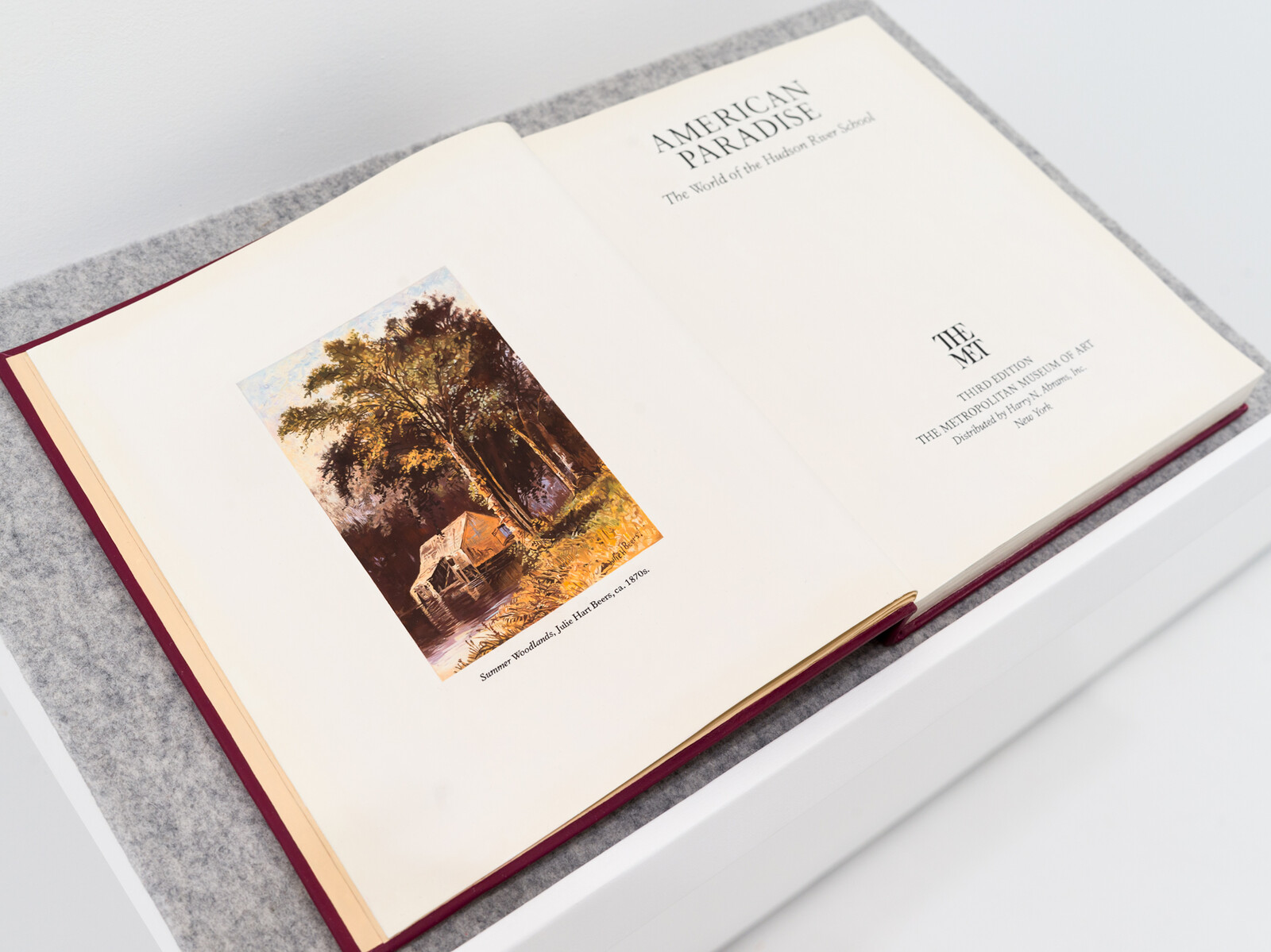
“American Paradise”: Anna Plesset took the title of her show at Jack Barrett Gallery from a 1987 exhibition at the Metropolitan Museum of Art about the nineteenth-century Hudson River School of American landscape painting, which featured twenty-five male artists and not a single woman. Plesset responds by researching the work of women artists of the time, applying an astonishingly skillful trompe l’oeil technique to the task of filling in historical gaps.
Her show opens with a sculpture mimicking the original exhibition’s catalogue, a perfect facsimile in oil on epoxy, aluminum, and steel placed on a plinth. Ostensibly the catalogue’s third edition (only one edition was published), the frontispiece is here replaced with a painting by a woman artist, Julie Hart Beers. In Value Study 2: Niagara Falls / Copied from a picture by Minot / 1818 (2021), Plesset paints an impeccable reproduction of the paper printout of an online image search for Louisa Davis Minot’s painting of the waterfalls, as if adhered to the canvas for reference using blue painter’s tape. The canvas itself shows the sketch and a beginning of a copy of Minot’s original. Plesset’s realism is not a remedy for historical injustice but a conceptual stop-and-start, a …
September 29, 2023 – Feature
Valerie Werder’s Thieves
Wendy Vogel

In Valerie Werder’s debut novel Thieves, Valerie—an autofictional alter ego—chronicles her slide from disgruntled gallery copywriter to brazen shoplifter. At first she steals for the rebellious thrill of inhabiting other identities; eventually, and more abstractly, she steals to reclaim her time, words, and sense of self. Thieves centers on the New York blue-chip commercial art world, with its fussy idiosyncrasies and particular flavor of exploitation. But it is equally a novel about the fungibility of female identity—and a shrewd indictment of how language operates under capitalism.
Werder’s decision to write in a self-reflexive mode—a contemporary novel in the lineage of Semiotext(e)’s influential “Native Agents” series, edited by Chris Kraus and featuring authors such as Kathy Acker, Lynne Tillman, and Kraus herself—speaks to a desire to expose and explore the conditions under which Thieves was produced. Yet Werder is critical of how language is strategically deployed in the name of “authenticity,” both within the art world and literature. In Thieves, words bolster value, then drain themselves of meaning. People become expendable, while material things reinforce their self-worth. Over the course of the novel, Valerie becomes both a precious object and a voracious acquisitor. She enables, and is enabled by, a mysterious …
July 31, 2023 – Feature
Ethan Philbrick’s Group Works
Laura Nelson
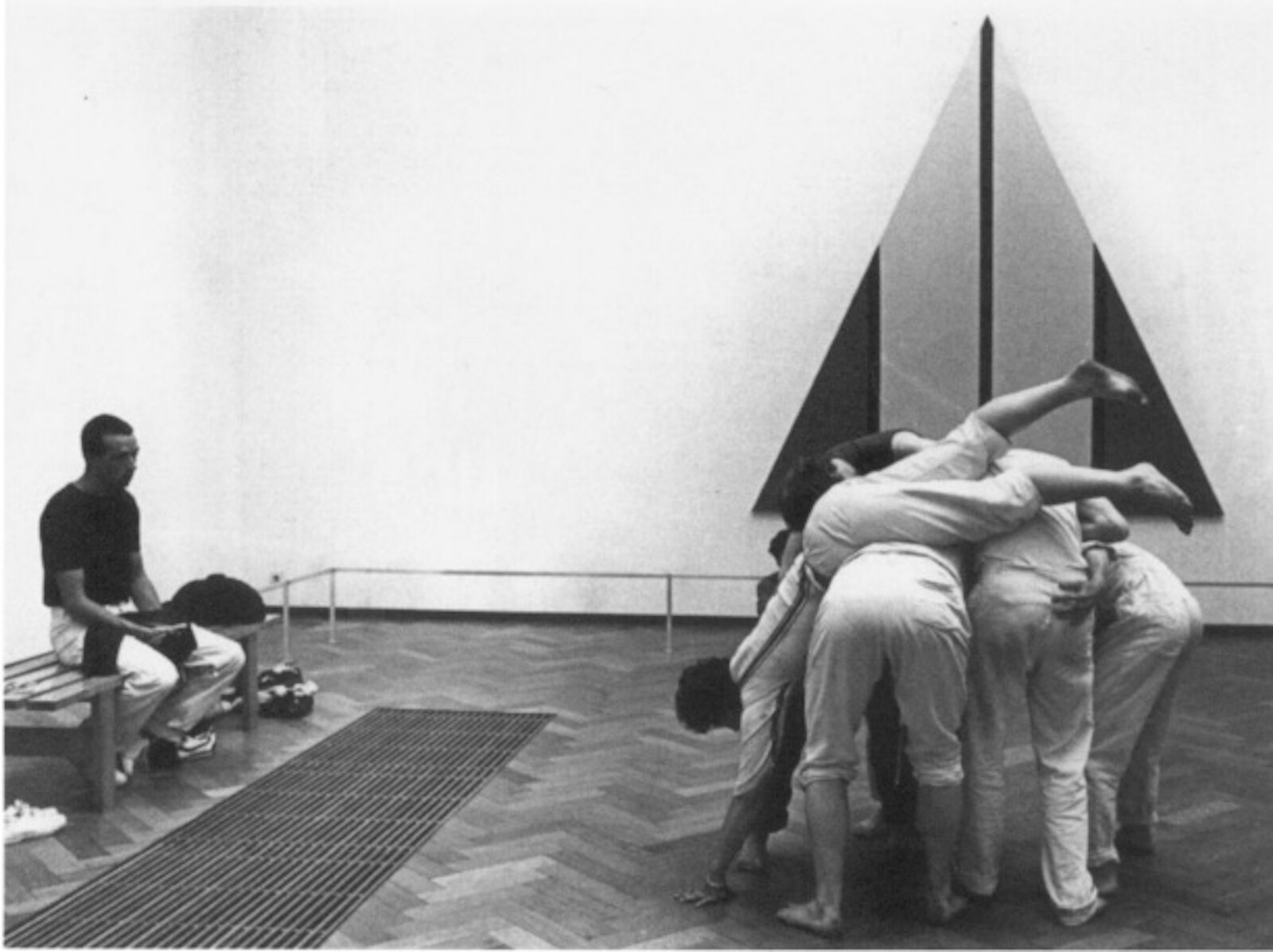
There are many ways to move through and think alongside Ethan Philbrick’s Group Works. At first glance, it’s a book of academic theory coming out of performance studies. Following a “desire for collectivity,” Philbrick takes the small-scale formation of “the group” as the locus of inquiry. He enters the text with a tentativeness toward groups, recognizing the ways that they are frequently viewed with healthy suspicion or uncritical celebration. He asks:
What kind of good-bad thing is a group to do?
When do we do things in groups, and why?
How do we group, and how does that matter?
Moving with these questions, the book turns to artists experimenting with novel group formations in dance, literature, film, and music in the 1960s and ’70s. Each chapter pairs a “group work”—Simone Forti’s 1961 performance Huddle, Samuel Delany’s 1979 memoir Heavenly Breakfast: An Essay on the Winter of Love, Lizzie Borden’s 1976 film Regrouping, and Julius Eastman’s 1979 musical piece Gay Guerrilla—with contemporary works that re-imagine, re-perform, or dialogue with these experiments. Taken together, each pairing amplifies and extends the book’s central impulses to consider how groups assemble and disassemble. Along the way, Philbrick introduces a chorus of thinkers—theorists of community, theorists of in-operative community, theorists …
June 8, 2023 – Feature
Trinh T. Minh-ha’s The Twofold Commitment
Patrick J. Reed

The Twofold Commitment revisits Trinh T. Minh-ha’s time-dipping Forgetting Vietnam (2015), a documentary feature about the mythical origins of Vietnam. Which is to say, it’s a book about a film which reflects on what the name of a country evokes of the history, people, and cultures associated with it. Seven interviews conducted between Trinh and eight media scholars and critics compose half of the book. Each approaches the filmmaker and writer’s work from a different tack, focusing on aspects of Forgetting Vietnam that are representative of her multi-hyphenate career. Irit Rogoff, for example, homes in on what it means to make a film for the feminist viewer, while Stefan Östersjö concentrates on the multi-sonic soundscapes within it. And Lucie Kim-Chi Mercier’s discussion, “Wartime: The Forces of Remembering in Forgetting,” provides important historical background about the country in question.
As a filmmaker and theorist, Trinh strives to disavow classification and impress upon her audience the necessity of the extra- and non-categorical. Thus certain terminology, like some already employed in this review, requires inverted commas more often than not. “Documentary” refers to a moving-image essay composed of Hi8 footage from 1995 and HD footage from 2012, which Trinh gathered on separate visits …
May 7, 2021 – Feature
Frieze New York
Osman Can Yerebakan

Nostalgia was the prevailing feeling as I approached Frieze New York’s new home at The Shed in Hudson Yards. I wasn’t around when the piers were a queer hub of sex and solidarity, but I remember the East River breeze on the ferry to Randall’s Island on previous visits to the fair, and a time before Thomas Heatherwick’s (indefinitely closed) eyesore The Vessel. Frieze’s pandemic-enforced change in venue brings into sharp relief the disparity between the neighborhood’s new occupiers—business-casual millennials; more recently those getting their vaccines at the nearby Javits Center; and, now, fair-goers—and the legendary stories that haunt the crumbling docks. It was nonetheless hard not to miss the old spectacle of the fair, which has been replaced by a new and more muted tone.
In place of the gigantic sculptures that guarded the vast fair tent in its previous location, visitors to The Shed find a series of more modest flower boxes. The Acute Art “augmented reality” app transforms them, via your phone screen, into Cao Fei’s RMB City AR (2020), a virtual rendering of an exploding, dystopian city. Stationed outside the entrance, the phone-activated work starts the chain of “camera moments” that stretches into the booths …
April 6, 2021 – Feature
“Grief and Grievance: Art and Mourning in America”
Ladi’Sasha Jones
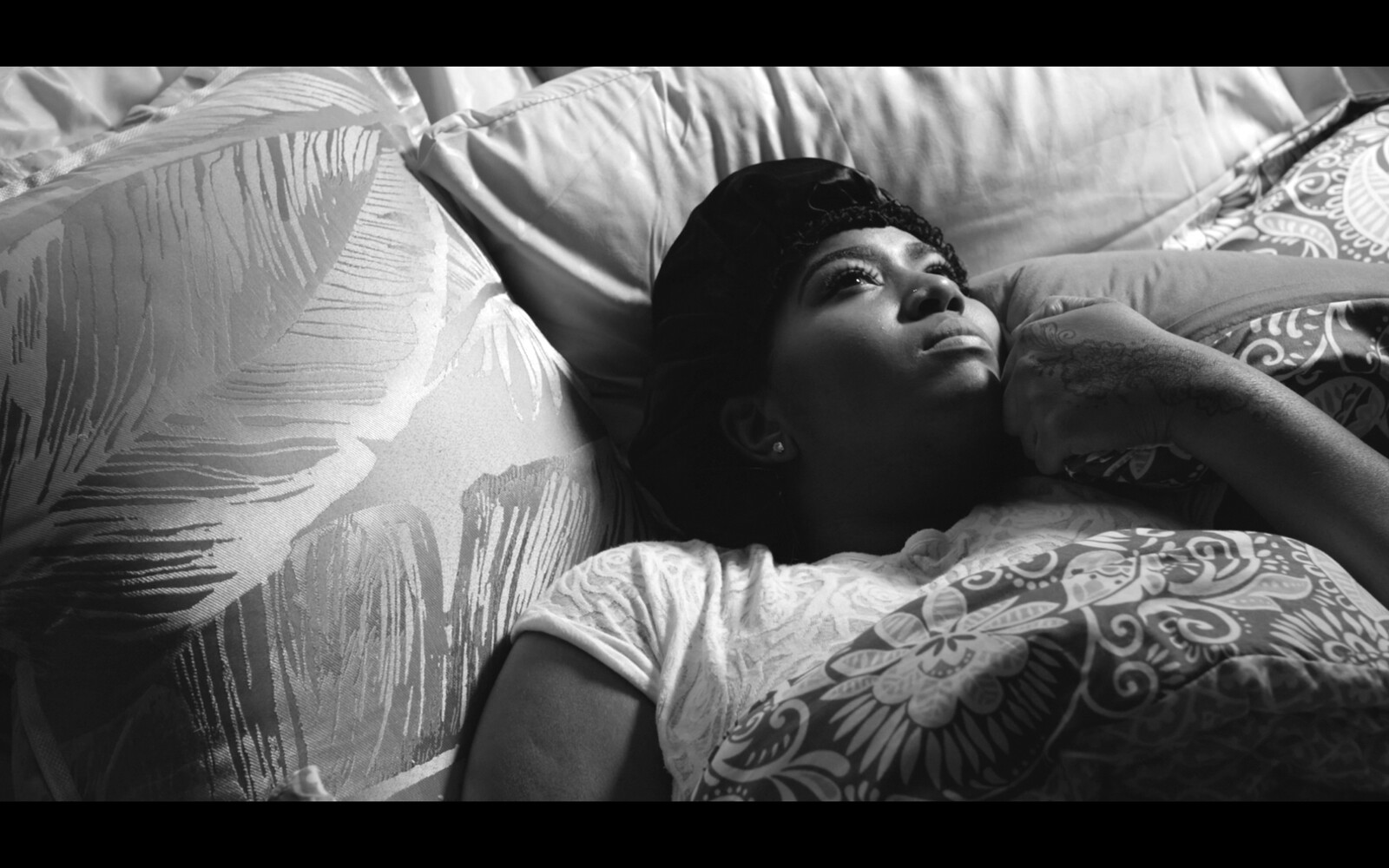
Ella Sheppard Moore’s father bought her freedom from enslavement as a child; as the lead arranger and composer of the Fisk Jubilee Singers, she grew up to establish Negro spirituals (or plantation songs) in the landscape of American popular culture. Listening to a 1909 recording of “Swing Low, Sweet Chariot,” which happens to be my favorite spiritual, I hear a haunting ringing out as the four members sing the phrase “coming for to carry me home”—taking a hold of the word “home,” stretching it, and drawing it out over a run of four notes wherein the register lowers twice as the chorus loops back around. What is utterly magnificent about this rendition of the song, which differs greatly from the version I grew up listening to and singing, is that it conveys a deeper, reifying story of radical refusal, stirring the condition that emerges from living in pursuit of freedom from the imagination of white terror. This kind of living is marked in the formations of early Black American music, wherein songs are in part prayers and prophetic visioning. They are spiritual speech acts that map pathways for new possibilities, self-possessed futurities.
Okwui Enwezor wrote that the social space …
February 8, 2021 – Feature
“WACK! Art and the Feminist Revolution”
Wendy Vogel
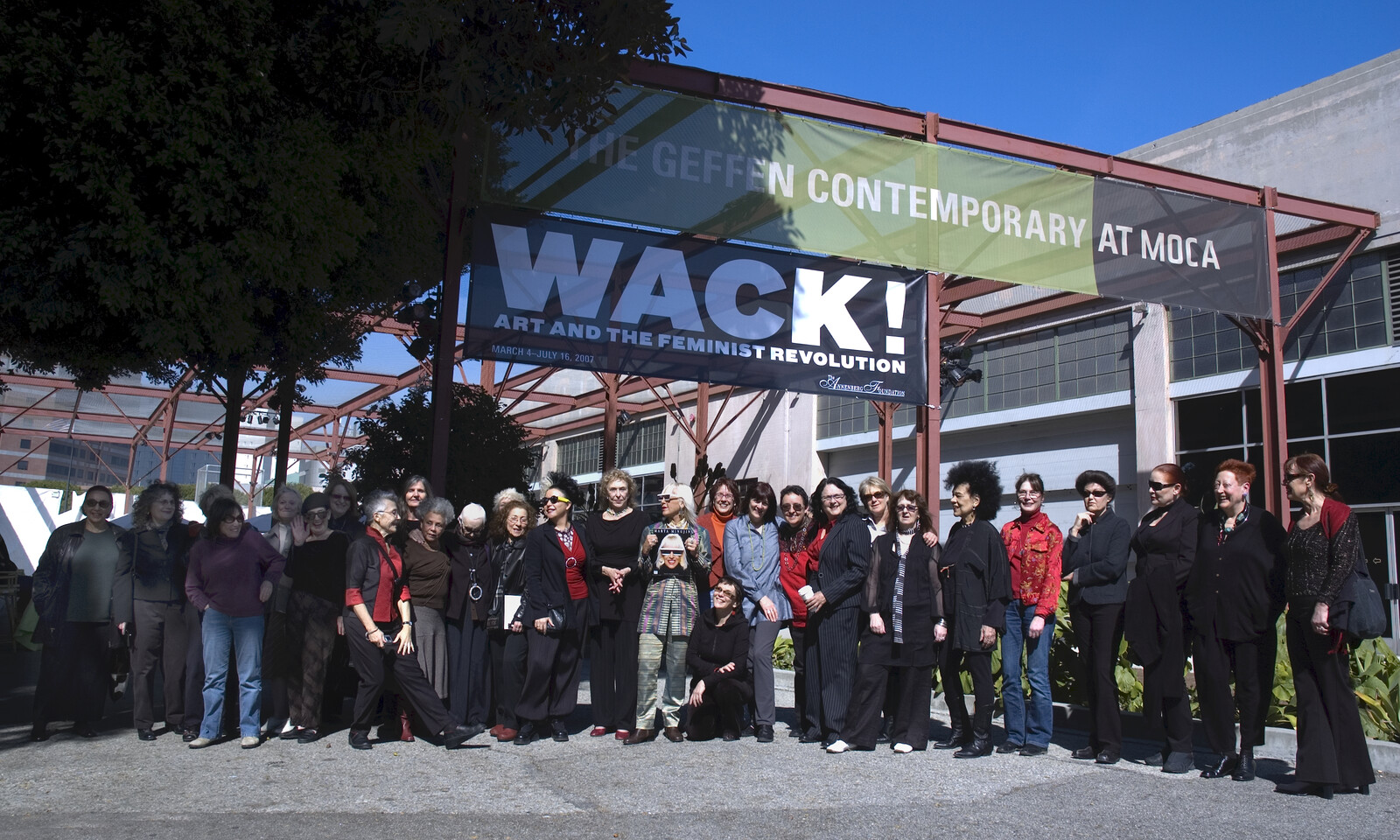
The Rearview series addresses blind spots in contemporary art history by returning to an influential exhibition, work, or text from the past and reflecting on its relevance to the present. In this edition, Wendy Vogel considers how the 2007 touring exhibition “WACK! Art and the Feminist Revolution” marked a generational shift in art criticism.
Feminist art history may come to be defined as the era before and after WACK!. The onomatopoeic word—more a metaphorical whip-crack than a line in the sand—is shorthand for “WACK! Art and the Feminist Revolution,” an exhibition curated by Cornelia Butler that opened at the Museum of Contemporary Art, Los Angeles (MOCA) in March 2007. This pioneering institutional survey of feminist art brought together work made by more than 120 female artists and collectives between 1965 and 1980. In the introduction to the 500-plus-page exhibition catalogue, Butler stated her curatorial goals: “My ambition for ‘WACK!’ is to make the case that feminism’s impact on art of the 1970s constitutes the most influential international ‘movement’ of any during the postwar period—in spite or perhaps because of the fact that it never cohered, formally or critically, into a movement.” It remains a bold statement today; it was …
July 27, 2020 – Feature
New York City Roundup
Terence Trouillot
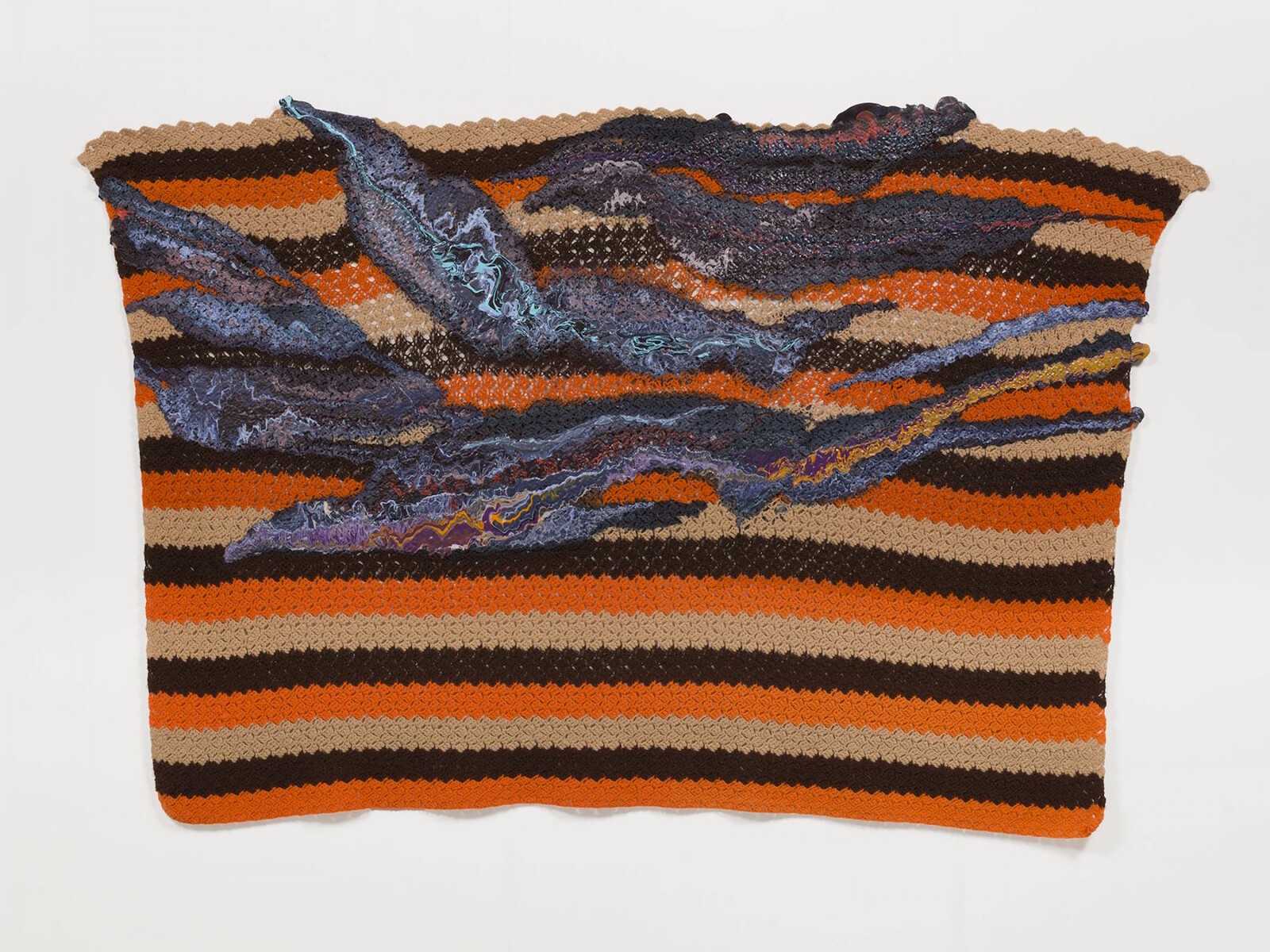
I didn’t think I’d be this excited to go back to a gallery. In some ways, I’ve enjoyed experiencing art within the confines of my Brooklyn apartment over the past months, and I’m still excited by the possibilities arising from the advent of novel digital platforms. But this time away from real-life art viewing has made the experience a novelty, and as galleries started to reopen it felt like a much-needed indulgence—after months of social distancing, and then weeks of defying said social distancing to protest in the streets against the most recent examples of state-sanctioned violence against Black bodies—simply to be back.
At “Jack Whitten. Transitional Space. A Drawing Survey.” at Hauser & Wirth on the Upper East Side—an exhibition which outlines Whitten’s exceptional works on paper chronologically, from the 1960s to the 2010s—I was surprised by the boyish glee I felt just at noticing the pronounced physicality of paper: the deckled edges, the wrinkle in the page, the raised contours of paper cut-outs collaged onto another flat surface. The show demonstrates the careful evolution in Whitten’s work from figuration to abstraction, but also focuses on the artist’s attention to material, and the various techniques that make his later …
March 13, 2020 – Feature
“Before and After Tiananmen”
Xin Wang

Imagine a curated overview of contemporary art from the United States titled “Before and After the Vietnam War.” Imagine the case not as a new direction for explorative scholarship but as the perpetuating, defining framework, over and over again. “Before and After Tiananmen,” Gallery 207 in the 2019 rehang of the permanent collection of the Museum of Modern Art, New York, presents established Chinese artists such as Xu Bing, Zhang Peili, Huang Yong Ping, and Song Dong in a sparse installation. Yet it registers not as a progressive move towards more inclusive and nuanced narratives of modern and postmodern art worldwide, but rather as a form of institutional gaslighting that raises deeper and stickier issues than the more manifest ills of exclusion or erasure. Reflecting a growing institutional recognition of heterogeneous global modernisms, it illustrates where that promise of progressive inclusivity falls short—and flat—if the historical framing remains uncontested, and situated knowledges are routinely overlooked. Presenting these alternative trajectories using the criteria and assumptions of the old canon—essentially treating them as outposts of western art history—will always miss the mark, limiting the discourse while purporting to expand it.
It is telling that in most reviews of the new MoMA, …
March 26, 2019 – Feature
New York City Roundup
Amy Zion
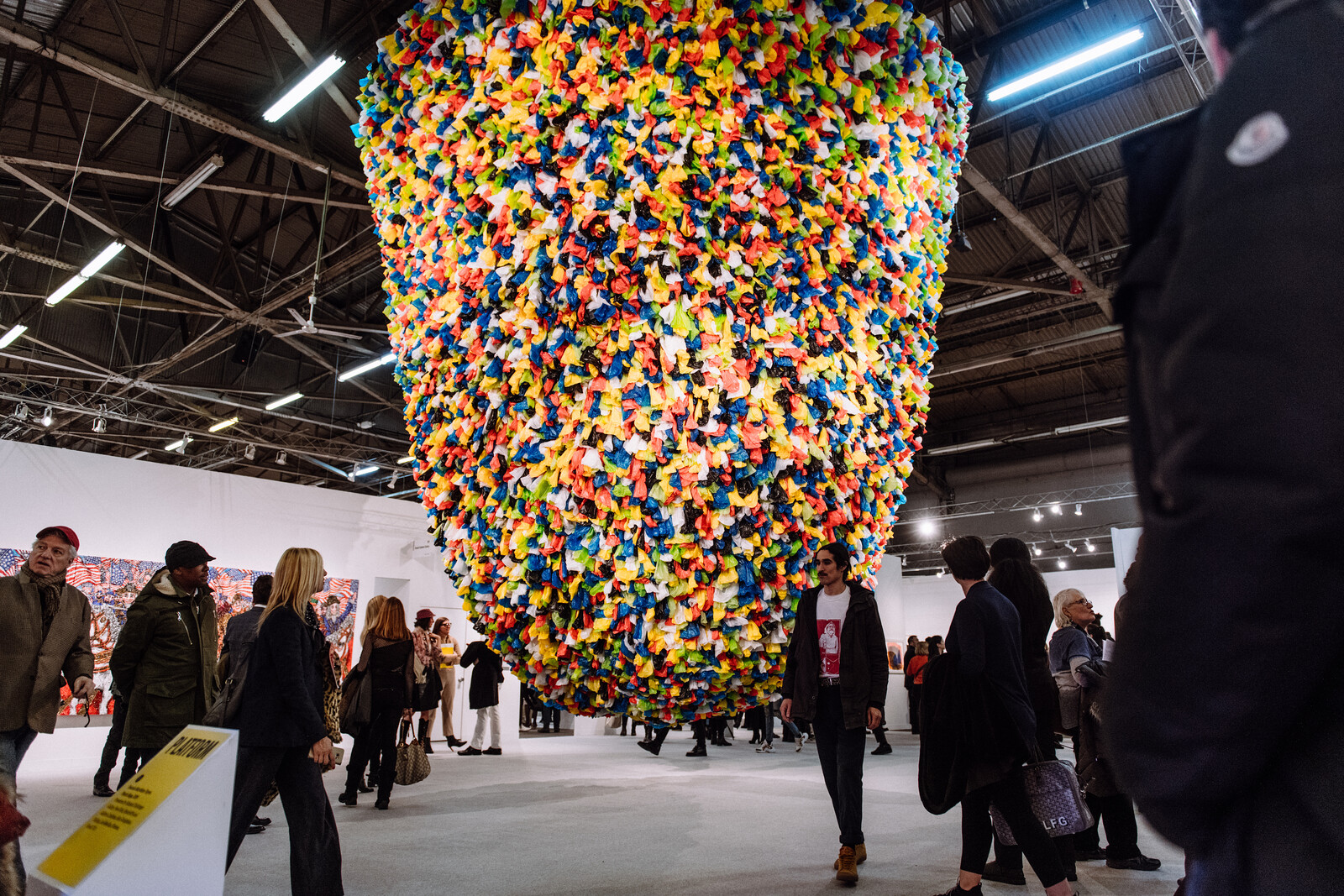
Twenty-five years ago, a group of young dealers, including Pat Hearn, Colin de Land, and Matthew, Marks started the first contemporary art fair in New York at the Gramercy Park Hotel. Titled the Gramercy International Art Fair, it spanned floors 12, 14, and 15 (there is no 13, of course) of the hotel, with each gallery taking over a room or suite. In the first iteration in 1994, Tracey Emin slept in the bed in the room where her work was displayed (by Jay Jopling/White Cube). In 1997, Holly Solomon installed two TV screens as part of a work by Nam June Paik in her room’s bathtub. After outgrowing the hotel, in 1999, the fair moved to the original site of the infamous 1913 Armory Show and changed its name. Now it fills two West Side piers and includes a modern/twentieth-century art portion alongside the contemporary. There are more fairs that share the week with the Armory—the Independent, which celebrated its 10th anniversary, Volta (more on that later), and Spring Break, among others.
Amid talks and other initiatives marking the quarter-century celebrations, at the fair there was a room several booths wide that included documentation and restaging of works from the …
May 23, 2017 – Feature
New York City Roundup
Orit Gat
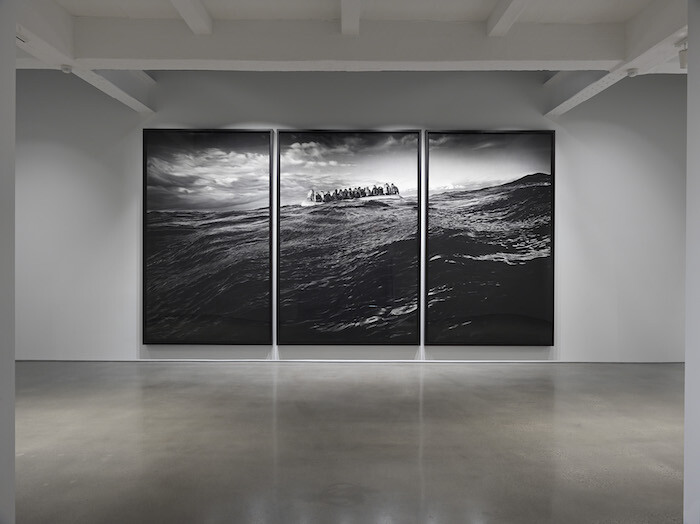
As I missed out on international art events this season because New York is so far away, all I could think of was how unlucky their curators are. You work on Venice or Documenta for a year or two or four. You start out researching when there’s a somewhat liberal president in the US and some island off the coast of Europe still considers itself part of the union. Though the war in Syria, the refugee crisis, and economic instability in the EU were already present, there’s still a feeling that this past year has served too many blows. And those large-scale exhibitions, years in the making, all opened to a great unknown.
On Instagram, almost all the photos I see from Venice are of the same works, and I wonder how and if they respond to the current situation, whether there is a way for art not to seem detached. In New York, few of the exhibitions currently on view in commercial galleries and museums focus directly on contemporary politics. At Metro Pictures, Robert Longo’s show, “The Destroyer Cycle,” does just that. It’s comprised of large-scale charcoal-and-graphite drawings of riot cops in full gear, prisoners being led to a CIA …
March 21, 2017 – Feature
78th Whitney Biennial
Chris Sharp

The stakes surrounding this Whitney Biennial are, to say the least, high. Indeed, it’s hard to imagine a biennial being under more pressure to signify, to mean, to produce meaning, to attempt to offer some special and tangible insight into our current moment. Instead, what the curators Christopher Lew and Mia Locks offer is art. This is not to say, of course, that the art presented here is divorced from our current harrowing reality, by any means, but that it does not forfeit its unique transformative power in the face of it. Lew’s and Locks’s love of and faith in art is refreshingly unequivocal. Nor is this to say that the biennial they have curated is devoid of the political, insofar as one of the capacities of the political is to seek to imagine alternatives to the status quo. In the alternative imagined here, an ideal diversity and gender balance reigns. Of the agreeably modest and negotiable number of 63 artists and artist collectives, this biennial possesses more artists of color than any other in its past. That diversity is not limited to ethnicity, gender, and geography (artists hail from as far afield here as Puerto Rico and Seattle, although …
May 13, 2016 – Feature
Art Fair Roundup: Berlin, Brussels, Cologne, New York
Stefan Kobel

When Claus Föttinger installed his Bar 60/99-16 (2016) in the booth of Düsseldorf’s Van Horn Gallery at Art Cologne, Rhinelanders did what they are said to do best and partied, using the installation as an actual bar. Yet what might have been expected to be the biggest celebration—the opening of the 50th Art Cologne, the oldest continuously running contemporary art fair—was a rather sober event. Everything was in place: after a long and painful downturn, some important international galleries have returned to the fair since Daniel Hug became director in 2008. Almost all of the predominant German protagonists have become regulars again since the death of Art Forum Berlin in 2010, and collectors from neighboring countries visit the fair, even some Britons and Americans. All this adds to the unrivaled (in Europe) density of private collectors and institutions in the Rhine region. Sales have always been solid—rarely spectacular—at Art Cologne, where the collectors are traditionally educated and savvy but not deep-pocketed.
But for a 50th jubilee one would have expected more. The low-key atmosphere was only partly due the general sentiment of a world in crisis, and there are structural reasons why the fair felt uninspiring. One of its strengths has …
January 12, 2016 – Feature
Julie Ault’s “afterlife”
Pedro Neves Marques

Dear Ted Kaczynski,
It will soon be twenty years since you entered prison. I saw that you finally changed your occupation status to “prisoner” in the Harvard alumni magazine, and that you’ve listed your eight life sentences as “awards.” Controversial as always. Twenty years have done a lot to New York… Luddite that you are, you’d hate it right now. Hell, I’m sure you’d be up for bombing the whole place! The thing is, there are so many tech start-ups, services, and businesses nowadays you wouldn’t know where to begin…
Julie Ault has a solo show at Galerie Buchholz’s new space uptown. I didn’t know that you had corresponded before, but in the show she says so, and who am I not to believe her? I’m sure you must have happened to discuss New York at some point. The city has always been a subject for her work—her life downtown in the 1980s, the artist’s collective Group Material. While Ault’s work has become more intimate, quieter, it’s definitely not mute. It’s just a different politics: of friendship, of details, her own affective archive.
Ault’s archive has traveled some: to the Museum für Gegenwartskunst, Basel; Culturgest, Lisbon (both 2013); and the 2014 Whitney Biennial …
November 14, 2012 – Feature
Chelsea after Sandy
Kareem Estefan
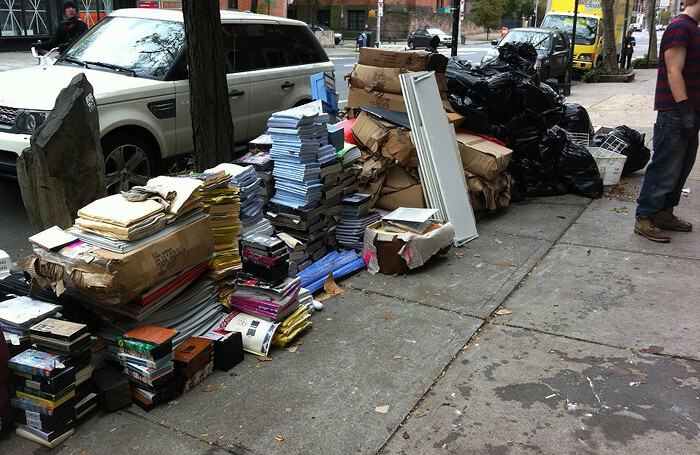
From houses scorched to the earth in Breezy Point, Queens, to homes completely swept away in Staten Island, when it came ashore late last month Hurricane Sandy wreaked unprecedented havoc on life as we know it in New York City. The storm cut off power for nearly a million New Yorkers, and tens of thousands remained without electricity, heat, or water for ten days or more. Artists, whose studios and galleries are disproportionately situated in coastal areas of Brooklyn and Manhattan like Red Hook, Dumbo, Greenpoint, Chelsea, the Lower East Side, and the East Village, have been among the hardest hit.
Two weeks after the storm, a besieged Chelsea art district is slowly coming to grips with the hurricane’s immense personal and economic impact, in artworks ruined and high-season sales foregone. To put a figure on the losses is, for now, a futile exercise. The neighborhood’s largest art insurance company, AXA, has received $40 million in claims from its clients, but many galleries were not insured by AXA—or at all—and even among those that were, the above sum does not even include equipment and infrastructure damage. If there is good news for the area west of Tenth Avenue, between 19th and …
January 31, 2012 – Feature
"Environments, Situations, Spaces"
Jill Johnston / Media Farzin
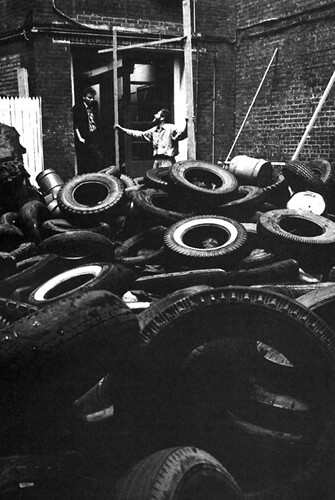
The critic, Jill Johnston once archly observed, is “one who practices the ART of criticism.” Johnston honed her skills through deep immersion in the New York scene of the 1960s, as a dance critic and later columnist for the Village Voice, and subsequently as a contributor to Art News, Art in America, and The New York Review of Books. Her brief, punchy reviews document an art that had not yet acquired a descriptive language, giving words to events that required a new sort of prose. Her writing style was intuitively suited to the task—an easy, fluid stream of consciousness; a direct response to things seen and felt; an informed, authoritative voice that could be funny, disparaging, and provocative in turns. More than a historic document of incredible immediacy, her work offers a model of art writing that recognizes its own stakes in creative production.
—Media Farzin
“Environments” at Martha Jackson’s
The “terrible children” invaded Martha Jackson’s Gallery last May and June with more of those baffling noncommercial commodities, things you can’t use or sell or label even, which nobody could be too clear about why they should be encouraged or endured much less considered the prestige items they obviously are, or …
December 9, 2011 – Feature
"9 Evenings: Theatre and Engineering"
Robert Smithson / April Lamm
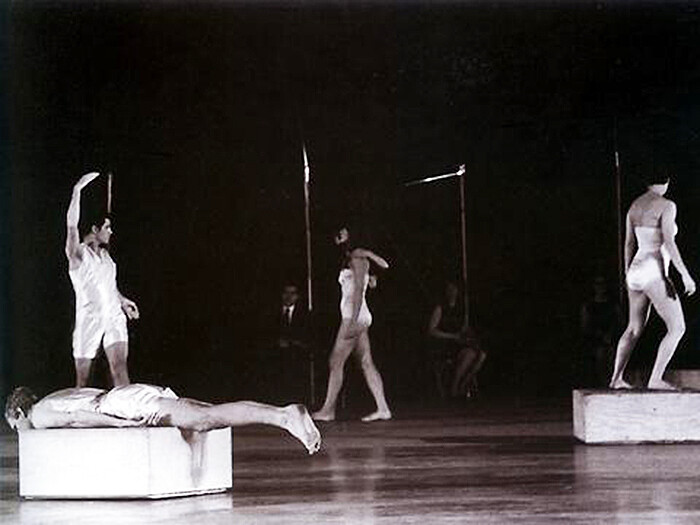
After stumbling across Robert Smithson’s vituperative response to a show that took place in 1966 at the Armory, I had to wonder what exactly it was that he saw. “Bovine formalism, tired painting, eccentric concentrics or numb structures”? His focus on the “funeral of technology” made me imagine that he’d seen a really bad Tinguely (which wouldn’t have surprised me) or maybe a bad Nam June Paik (which would). As it turns out, his ire was directed at an exhibition organized by Billy Klüver (an engineer) that included 10 artists, including Robert Rauschenberg, John Cage, Öyvind Fahlström, and Yvonne Rainer. Under the witty acronym E.A.T. (Experiments in Art and Technology) the performances, nonetheless, pioneered the way for the now-common practice of artists collaborating with practitioners from different fields. For the most part, the result of bringing 30 engineers together with 10 artists yielded performance kitsch at its worst (John Cage’s recordings of brain waves being the exception). You can watch a condensed (20-minute) version of the “Nine Evenings”: here.
—April Lamm
An Esthetics of Disappointment ON THE OCCASION OF THE ART AND TECHNOLOGY SHOW AT THE ARMORY
Many are disappointed at the nullity of art. Many try to pump life or space into …
Load more